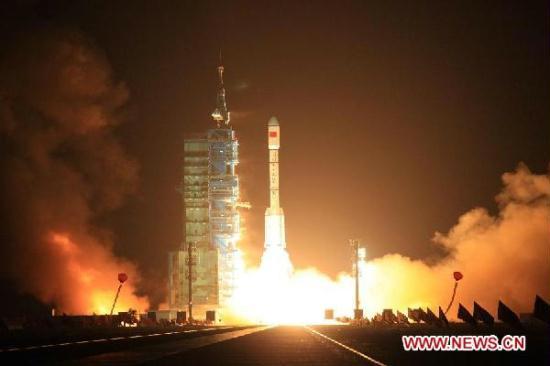Tweet
Potential CEOs are opting for quicker dollars at startups and investment firms

Illustration by Sophia Martineck
Dave DeWalt is known within Silicon Valley for his technical chops, his charisma, and his business accomplishments, which include reinvigorating security software maker McAfee and selling it to Intel (INTC) in 2010 for $7.7 billion. At 47, he now has bigger ambitions. “Running a big-cap company is considered the crowning achievement in many people’s careers, and I feel that way as well,” says DeWalt.
Such talk makes DeWalt an anomaly. In tech circles, the C-suite at a publicly traded company is no longer the be-all and end-all. Just look at the troubles Yahoo! (YHOO) and Hewlett-Packard (HPQ) have recently had finding new leaders. HP canned former SAP (SAP) Chief Executive Officer Léo Apotheker after just 11 months—then faced a barrage of criticism for replacing him with HP director and former EBay (EBAY) CEO Meg Whitman without bothering to look beyond its own boardroom.
Industry consolidation has created a small number of very large technology companies such as HP, Cisco (CSCO), and Microsoft (MSFT). They’ve stumbled in recent years as disruptive developments like the mobile revolution and the dash to the cloud shake the entire sector. As the job of leading these companies gets tougher, there are fewer talented leaders with the skills—and inclination—to do it. Rather than wait for high-profile CEOs such as Cisco’s John Chambers, Microsoft’s Steve Ballmer, and Research In Motion’s (RIMM) Mike Lazaridis and Jim Balsillie to step down, many potential replacements have decamped for more exciting, and potentially more lucrative, gigs at startups or as investors. “This is the first time in tech history that you have this many companies with CEOs approaching 60 that don’t have any obvious successors,” says John Thompson, vice-chairman of recruiting firm Heidrick & Struggles (HSII).
Consider Cisco. With 62-year-old Chambers now in his 16th year as CEO, many of his most capable lieutenants have given up waiting for their chance to succeed him. The list of departures since 2007 includes former Chief Development Officer Charles Giancarlo (now a private equity partner at Silver Lake), longtime general manager Tony Bates (who jumped to Skype just before it was purchased by Microsoft in May), and former head of the data center business Jayshree Ullal (now CEO of Arista Networks). While the accomplishments of Chambers and other longtime CEOs including Ballmer are undeniable, their long tenure has sapped the strength of the back bench, says Heidrick’s Thompson. Now a common belief is that both companies will need to go outside for their next CEO—not an easy task when the competition for talent includes hot pre-IPO companies such as Facebook. “The people who could possibly do these jobs realize it would be easier to create a new company rather than try to get an old stodgy one to adopt new ideas,” says Trip Hawkins, CEO of game developer Digital Chocolate.
Boards of directors get low marks on recruitment and retention, too. Few give much attention to succession planning until crisis hits, says Jeffrey A. Sonnenfeld, senior associate dean of the Yale University School of Management. New hires such as Bartz and Apotheker are set up for failure as boards prioritize near-term earnings over long-term risk-taking. “We’ve been weeding the qualified people out of the system for the past 15 years,” says Roger McNamee, a longtime technology investor and co-founder of private equity firm Elevation Partners.
Nor have tech companies excelled at developing CEOs. Once executives prove themselves in a given area—say, software engineering—they rarely go through General Electric (GE) -style development programs to get exposure to a business’s full breadth. There are exceptions: Intel and IBM (IBM) are both organized so that top executives get to run multibillion-dollar business units. IBM Senior Vice-President Michael E. Daniels, for instance, runs the $56 billion services business. At Intel, young executives have an apprentice system where they shadow top executives (current CEO Paul S. Otellini spent years carrying Andy Grove’s bags). As a result, both companies have succeeded at finding internal candidates for the top job. But this is not the norm in Silicon Valley, where most companies are organized along strictly functional lines such as marketing. “The tech industry is great at producing technology, but it’s not producing leaders,” says Rosabeth Moss Kanter, a professor of administration at Harvard.
To break the cycle, some tech industry veterans say it’s time for a new approach to choosing CEOs. Forget the old idea of finding an older, well-known operations or sales executive to maximize earnings and soothe nervous shareholders. Too often, those experiments—Dell’s (DELL) Kevin Rollins, Apple’s (AAPL) John Sculley, Yahoo’s Carol Bartz—have failed, says McNamee. Now Old Guard tech companies need to find risk-takers willing to bet big on new visions. That’s hard enough for entrepreneurs such as Amazon.com’s (AMZN) Jeff Bezos. It may be even harder at companies settling into middle age.“Somebody is going to have to take some risks, and bring in younger CEOs for a while,” says McNamee.
To find them, some boards are taking a larger role in succession planning. Egon Zehnder International has been testing a new approach for two years, in which board members use a number of techniques such as mentorship programs to groom internal candidates, says Karena Strella, managing director of the firm’s U.S. unit. The goal is to take some focus off past accomplishments and identify impassioned, adaptable people. Then it’s up to the board to back them, says Thompson. “People forget that it took Steve Jobs seven years to really move the needle at Apple,” he says. “If you used that standard today, he would have been fired long ago.”
The bottom line: Shortsighted boards and the long tenure of some CEOs have led to a succession crisis at big-cap tech companies.
Burrows is a senior writer for Bloomberg Businessweek, based in San Francisco.
Newscribe : get free news in real time
Newscribe : get free news in real time

